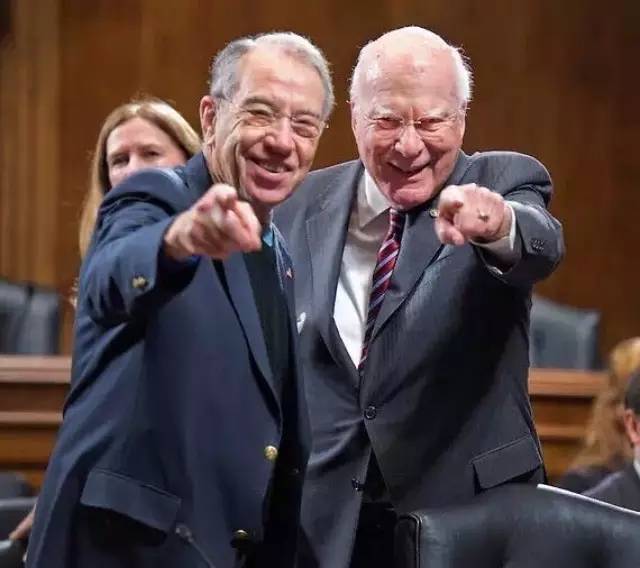【美国移民】交锋激烈,参议院大佬斥责现行TEA定义 | EB-5快讯
最近的文章,我们一直有谈到,TEA认定的是EB-5改革方案争议最大的地方。在EB-5区域中心计划,搭上顺风车延期到12月11日之时,在国会激烈的交锋已经到来。今天来看一篇breitbart网站的报道,由业内朋友Adela义务翻译,特此感谢。

GRASSLEY参议员,谴责外国富有投资者签证的滥用
参议院司法委员会主席Chuck Grassley:意图鼓励在美高失业地区进行投资的,EB-5签证计划,反而被用到了富人区的豪华建设中。
Grassley曾就,EB-5政策的现状 - 一项允许外国人在美进行商业投资获得永居的计划,进行过批判。他认为,EB-5计划易出现诈骗、缺乏监管的现象,并且其收益值得怀疑。在本周三(EB5Sir注:10月7日)的参议院演讲上,这个爱荷华共和党议员继续谴责了该计划,并指出另一个令人担忧的事:重新划分投资区域(gerrymandering investment regions)。
EB5Sir注:gerrymandering,原意是选举时的选区划分,用在EB-5领域指,通过结合多个人口统计区的人口和失业率,使得EB-5项目所在地满足TEA(目标就业区)的定义。
目前EB-5有两种方式、两种价格让外国投资者获得绿卡。一种是投资100万美金到一个新商业实体,并创造10个全职就业。另一种是投资50万美金到乡村或高失业地区(TEA)。
TEA正是Grassley争论的话题,他在近期的报告中表示,TEA并未向预期的轨道发展。因为所谓的TEA,已有太多的钱被投到“富裕的城市及奢华建筑项目”中去了。
Grassley在周三的参议院演讲中说,“比起真正的高失业地区或乡村,外国投资者们用大把的钱,在繁华的城市中建设了四星级酒店、商业办公楼。
“这就是重新划分区域(gerrymandering)所造成的,TEA边界线一端是项目坐落的富裕区块,而几英里外的另一端则是真正的高失业区。”
媒体也指出了TEA定义被滥用的情况。Grassley指出,华尔街日报(Wall Street Journal)9月的报道:纽约中城区Hudson Yards项目,符合TEA的定义,是因为其(TEA)边界周围包括进一项公共住房项目。
另一个例子,纽约时报(New York Times)报道:为了将曼哈顿炮台海事大楼能划在TEA内,简直是玩了地理游戏,因为将一个公共住宅项划进了TEA区域内。
“换言之,开发商们都各尽其能了,谁都想把Farragut Houses划到自己TEA内。Farragut Houses是一个公共居住社区,可以(拉高就业率以)拉低投资金额。”Grassley说。(Adela注:Farragut Houses所在的这一小小的统计区块已经变成了那些想要利用投资移民签证计划的发展商们趋之若鹜的地方,该区块的失业人数已经被用在了N个投资项目上。)
根据Grassley联合参议院司法委员会高级成员Patrick leahy的共同立法行动表明, 其意在对EB-5进行改革,消除和国会最初意愿背道而驰的现象。
Grassley说,“最初国会创造EB-5法案,设立了两种不同等级的投资模式,就是想清晰地引导外国投资者在高失业地区及乡村进行投资”。他还引用了华尔街日报的报道:80%的项目资金被投入了所谓的TEA地区,如不重新划分TEA,将不存在真正意义上的TEA。
EB5Sir自己好奇,去翻了下Chuck Grassley参议员的官方网页,找到了这篇演讲稿,言辞绰绰,指出EB-5当前形势发展完全违背了国会1990年立法的初衷,原本要鼓励乡村和经济欠发达的高失业地区的投资,结果却被利用发展纽约等大都市的EB-5项目。在Grassley参议员的发言中,三次引用了美国大媒体的报道中举出的三个项目,通过重新划分区域(gerrymandering)的方式,来玩TEA认定的游戏。
最后他说:Let me end by saying again that the program is in need of reform. In June, Senator Leahy and I introduced S. 1501, a bill that would substantially reform the program by improving program oversight, addressing national security vulnerabilities, and restoring the program to its original intent. (让我再次强调EB-5计划需要改革来结束我的发言。在6月份,参议员Leahy和我推出S. 1501提案,通过大幅改革该计划的监管、强化国家安全,并将其拉回立法初衷。)
关于,这里所说的S. 1501提案,请看此文,这也是我们所说的史上最悲催EB-5提案:史上最悲催提案强势出炉,涨价已定,排期未解 | EB-5快讯
同时,关于TEA的定义,不同利益相关方有不同的见解,虽然Grassley参议员所说的都是事实,但是不能否认的是,来参与造这些高档酒店项目的建筑工人,创造出来的就业是提供给他们的,他们难道是住在高档社区的,不是从别的低收入或者高失业地区来建设这些项目的?既然如此,EB-5的立法初衷不也是为了创造就业吗?在大都市不是更能创造就业吗?持这样观点的人并非少数,10月1日的参议院新提案,就有Jeff Flake议员专门提议改革TEA定义,并且支持这样的观点,请查阅本文:一天两提案,幸福太多有没有 | EB-5重大利好
Chuck Grassley和Patrick leahy参议员来自农业州,所以有着将EB-5投资导回农业州的坚定立场,而一些代表大都市和都市房产商的议员们又持相反立场。虽然,没人清楚,最终出台的EB-5法案将会如何改写TEA定义,但是有一点明确的是,TEA认定是法案中最最激烈的交锋点。
* 来自业内朋友Spencer的题图照片,为Chuck Grassley和Patrick leahy参议员的合影,很能代表大都市项目方此时此刻的心情。
原文作者: Caroline May,原文来源:www.breitbart.com。
今天有一篇业内朋友的爱心求助信,烦请点击左下角的“阅读原文”查阅。
Sen. Grassley Decries Abuses In Wealthy Foreign Investor Visa Program
by Caroline May8 Oct 2015
A visa program intended to encourage wealthy foreigners to invest in high unemployment areas in the U.S. is instead being used to direct money to luxury establishments in affluent areas, according to Senate Judiciary Chairman Chuck Grassley (R-IA).
Grassley has been a critic of the current state of the EB-5 visa program — which allows foreigners to invest in U.S. businesses in exchange for permanent residency — arguing the program is susceptible to fraud, lacks oversight and has questionable benefits. In a floor speech Wednesday the Iowa lawmaker decried yet another cause for concern: gerrymandering investment regions.
There are two avenues and two prices for foreign investors to take in order to obtain a green card via the EB-5 visa program. The first has him or her investing $1 million in a new business that creates 10 full-time jobs. The second path allows the investor to spend $500,000 in a rural or high unemployment area known as a “Targeted Employment Area.”
It is these Targeted Employment Areas that Grassley argues and recent reports have indicated might not be as blighted as expected. In fact, Grassley says that much of the money that has been invested into these Targeted Employment Areas have instead been sent to “lavish building projects in well-to-do urban areas.”
“Four-star hotels and commercial office buildings are being built with foreign investment dollars in affluent urban neighborhoods rather than high unemployment and rural areas, which Congress intended to benefit,” Grassley said on the Senate floor Wednesday, according to prepared remarks.
“This has been done by ‘gerrymandering’ the boundaries of the Targeted Employment Area to include, at one end, the affluent census tract in which the building project is located, and at the other end, perhaps many miles away, a census tract with high unemployment,” he added.
News outlets have highlighted apparent misuses of the Targeted Employment Area threshold. Grassley pointed to a September Wall Street Journal report detailing that the Hudson Yards project in midtown New York City qualified as a targeted investment because the boundaries for the area were drawn to include a public housing project.
Another example, reported by the New York Times, revealed that the boundaries putting the lower Manhattan Battery Maritime Building in a targeted area required geographical acrobatics to include a housing project in Brooklyn.
“In other words, the developers did everything they could to include the Farragut Houses project — which is a public housing community — to come in at the lower investment level,” Grassley said.
According to Grassley, who along with Senate Judiciary Committee Ranking Member Sen. Patrick Leahy (D-VT) has legislation aimed at reforming the EB-5 program, the phenomena is antithetical to Congressional intent.
“When it was created by Congress, we set two different investment levels, and clearly tried to steer this foreign capital to high unemployment and rural areas. That’s not happening,” Grassley said, noting that the Wall Street Journal reports that 80 percent of program money is being directed to projects in areas that, if not gerrymandered, would not qualify as being in Targeted Employment Areas.
